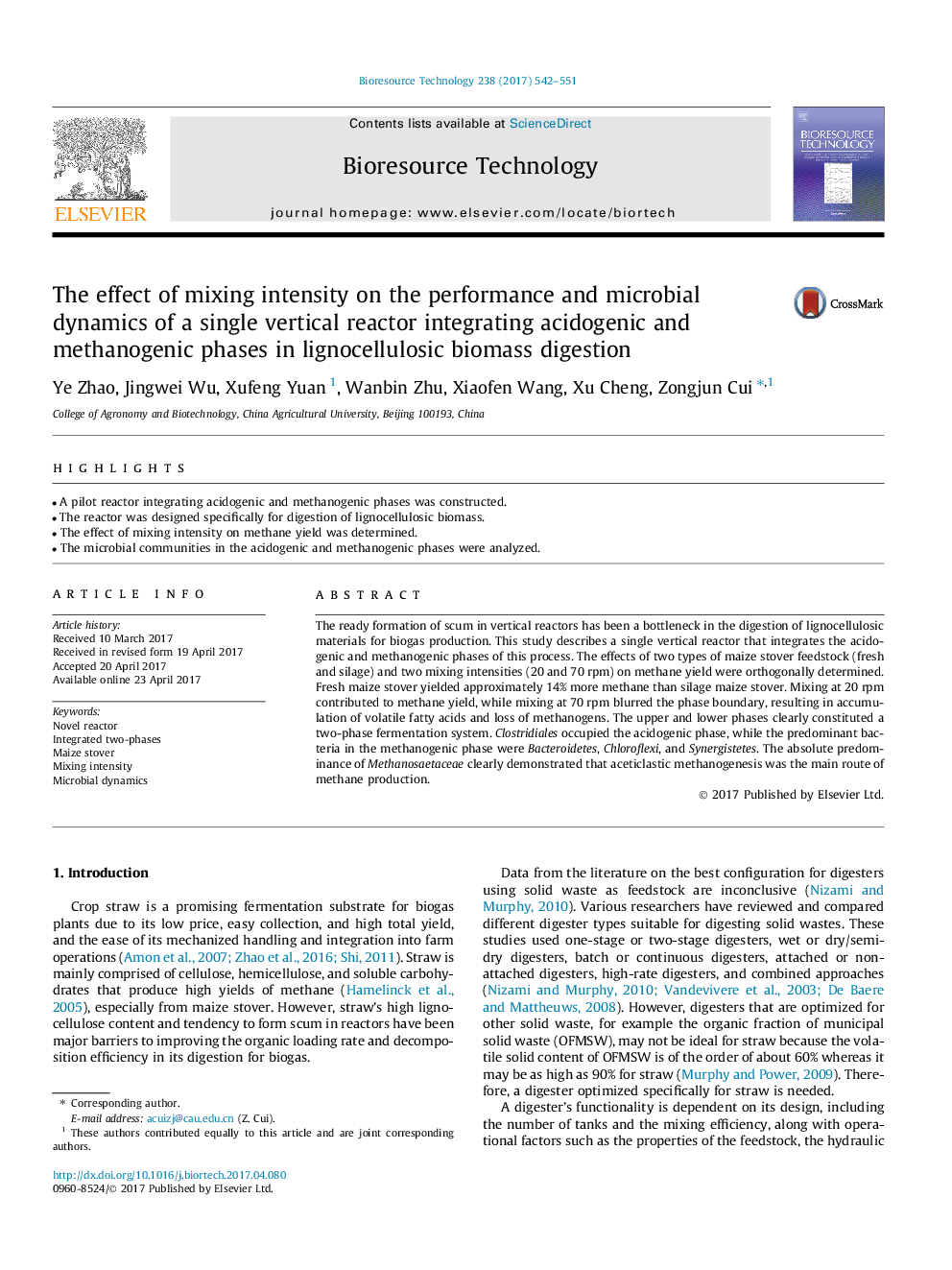| کد مقاله | کد نشریه | سال انتشار | مقاله انگلیسی | نسخه تمام متن |
|---|---|---|---|---|
| 4997230 | 1459905 | 2017 | 10 صفحه PDF | دانلود رایگان |
- A pilot reactor integrating acidogenic and methanogenic phases was constructed.
- The reactor was designed specifically for digestion of lignocellulosic biomass.
- The effect of mixing intensity on methane yield was determined.
- The microbial communities in the acidogenic and methanogenic phases were analyzed.
The ready formation of scum in vertical reactors has been a bottleneck in the digestion of lignocellulosic materials for biogas production. This study describes a single vertical reactor that integrates the acidogenic and methanogenic phases of this process. The effects of two types of maize stover feedstock (fresh and silage) and two mixing intensities (20 and 70Â rpm) on methane yield were orthogonally determined. Fresh maize stover yielded approximately 14% more methane than silage maize stover. Mixing at 20Â rpm contributed to methane yield, while mixing at 70Â rpm blurred the phase boundary, resulting in accumulation of volatile fatty acids and loss of methanogens. The upper and lower phases clearly constituted a two-phase fermentation system. Clostridiales occupied the acidogenic phase, while the predominant bacteria in the methanogenic phase were Bacteroidetes, Chloroflexi, and Synergistetes. The absolute predominance of Methanosaetaceae clearly demonstrated that aceticlastic methanogenesis was the main route of methane production.
Journal: Bioresource Technology - Volume 238, August 2017, Pages 542-551
